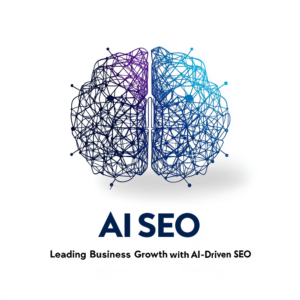In teh rapidly evolving landscape of digital marketing,staying ahead of the competition requires more than just intuition—it demands a keen analysis of data and trends. As businesses increasingly turn to artificial intelligence (AI) to refine their strategies, a powerful advantage emerges: the ability to uncover ranking trends over time. By harnessing the capabilities of AI, marketers and SEO professionals can gain deeper insights into search engine behaviors, customer preferences, and competitive landscapes. In this article, we’ll explore how AI technologies can be leveraged to analyze historical data, identify patterns, and predict future ranking trends, enabling businesses to make informed decisions that drive growth and enhance their online visibility. Join us as we delve into the transformative potential of AI in the realm of digital marketing and discover actionable strategies to elevate your ranking game.
Table of Contents
- Understanding AIs Role in Analyzing Ranking Trends
- Identifying Key Metrics to Track Over Time
- Implementing AI Tools for In-Depth Data Insights
- Strategic Recommendations for Optimizing Ranking Performance
- Concluding Remarks
Understanding AIs Role in Analyzing Ranking trends
Artificial intelligence (AI) has transformed the way we interpret and analyze ranking trends in various domains. By processing vast amounts of data at unprecedented speeds, AI empowers businesses and marketers to identify shifts in rankings that they might or else overlook. Some of the key benefits of utilizing AI in this context include:
- Data Processing: AI can aggregate and analyze data from multiple sources,making it easier to understand complex ranking dynamics.
- Pattern Recognition: Machine learning algorithms can spot subtle trends over time, wich can inform strategic decisions.
- Predictive Insights: By applying historical data analysis, AI can provide forecasts about future ranking movements.
In the realm of SEO and online visibility, AI-driven analytics tools enhance our ability to make data-informed decisions. For example, a comparative analysis table can offer insight into how various elements impact ranking performance over time:
| Ranking Factor | % Impact | Time Period Analyzed |
|---|---|---|
| Backlinks | 40% | Last 6 Months |
| Content Quality | 30% | Last 6 Months |
| User Engagement | 20% | Last 3 Months |
| Site Speed | 10% | Last 6 Months |
The data highlighted in this table clarifies how each ranking factor contributes to overall performance, allowing organizations to prioritize initiatives that are most likely to enhance their search visibility. By leveraging AI’s capabilities,businesses can navigate the complexities of ranking trends more effectively,ensuring they’re always one step ahead in the competitive landscape.
Identifying Key Metrics to Track Over Time
Understanding the metrics that matter can significantly enhance your ability to trace the trajectory of your SEO performance. by focusing on a select few indicators, you can draw insights that help refine your strategies.Consider tracking the following key metrics:
- Organic Traffic: Measure the volume of visitors coming from search engines, providing insights into overall site visibility.
- Keyword Rankings: Keep tabs on how specific keywords perform over time to identify shifts in search behavior.
- Bounce Rate: A high bounce rate may indicate that your content does not meet user expectations or needs enhancement.
- Conversion Rate: Track the percentage of visitors that complete a desired action, helping gauge the effectiveness of your content.
- Click-Through Rate (CTR): This metric shows how often people click on your listing in search results, indicating how appealing your title and meta description are.
To visualize these metrics, consider creating a straightforward table that summarizes your findings month over month. This can definitely help you recognize patterns, celebrate achievements, and pinpoint areas for adjustment:
| Month | Organic Traffic | Avg. Keyword ranking | Conversion rate |
|---|---|---|---|
| January | 5,000 | 5 | 2.5% |
| February | 6,000 | 4 | 3% |
| March | 7,500 | 3 | 4% |
Implementing AI Tools for In-Depth Data Insights
Incorporating AI tools into your data analysis strategy can dramatically enhance your understanding of ranking trends over time. With the ability to process vast amounts of information quickly and accurately, AI can identify hidden patterns that traditional methods might overlook. By utilizing machine learning algorithms and predictive analytics, organizations can:
- examine historical data to forecast future rankings.
- Segment data into meaningful clusters for tailored insights.
- Automate reporting to streamline monitoring and analysis.
Moreover, AI-driven tools allow for real-time monitoring, enabling businesses to make proactive decisions rather than reactive ones. This shift leads to a deeper understanding of consumer behavior and trends, offering a competitive edge. For example, consider the following comparison of ranking performance before and after implementing AI insights:
| Metric | Before AI Implementation | After AI Implementation |
|---|---|---|
| Average Monthly Visits | 10,000 | 15,000 |
| Conversion Rate | 2% | 5% |
| Time on Page | 1:30 minutes | 3:00 minutes |
These statistics clearly show that implementing AI not only improves visibility but also enhances user engagement, making it an invaluable asset for any data-driven organization.
Strategic Recommendations for optimizing Ranking Performance
To enhance ranking performance, it’s essential to leverage AI-driven insights that provide a extensive view of trending keywords and changing user behaviors.By adopting a data-centric approach, you can pinpoint high-performing areas and identify underperforming segments that need attention. Focus on the following strategies:
- Keyword Optimization: Utilize AI tools to analyze keyword performance over time, adjusting your content strategy to align with trending searches.
- Content Gap Analysis: Compare your offerings with competitors using AI analytics to discover content gaps that you can fill.
- Dynamic Content Adjustments: Regularly update existing content based on AI-driven insights to keep it relevant and engaging.
In addition, consider using AI to enhance user engagement metrics, which can later boost your rankings. Understanding user preferences through AI-enabled analytics allows for personalized content recommendations. Here’s how you can implement this:
| Strategy | Description |
|---|---|
| User Behavior Tracking | Use AI tools to monitor how users interact with your content for better personalization. |
| predictive Analysis | Implement predictive analytics to forecast future trends and adjust your strategy accordingly. |
| A/B testing | Experiment with different content variations using AI insights to determine what engages users more effectively. |
Concluding remarks
leveraging AI to uncover ranking trends over time is not just a savvy move—it’s an essential strategy for any organization looking to stay competitive in today’s dynamic digital landscape. By harnessing the power of artificial intelligence, businesses can gain invaluable insights that inform their SEO strategies, enhance content relevance, and ultimately drive better engagement with their target audience.
As we look to the future, the ability to adapt to changing algorithms and user behavior will be pivotal in securing and maintaining a strong online presence. AI tools enable us to not only analyze historical data but also predict potential shifts,ensuring that we stay one step ahead of the competition.As you explore the exciting possibilities AI offers,remember that the key to success lies in continuous learning and adaptation. By staying informed and agile, you can tap into the full potential of AI to transform your SEO efforts and achieve sustained growth. Embrace the journey of innovation, and watch as your efforts yield remarkable results.Thank you for engaging with us on this topic. We would love to here your experiences and thoughts on using AI to uncover ranking trends—drop your comments below!


